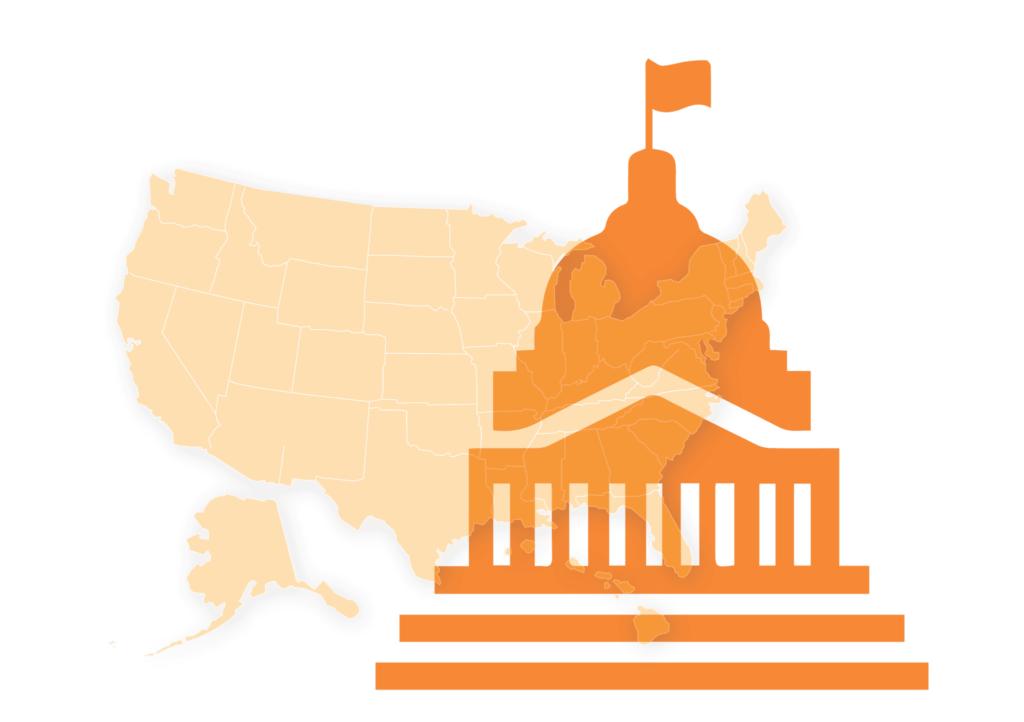New tool by Ed Trust examines data, assesses state policies and practices on teacher diversity
WASHINGTON (November 19, 2020) — Despite widespread calls from advocates across the country for increasing the racial make-up of the teaching workforce, school-level data on educator diversity is extremely hard to come by and targeted state policies and programs to diversify the educator workforce vary widely. Currently, only four states invest in diversifying the educator workforce in areas that influence hiring and recruitment decisions and fewer than half of all states (21 states) provide publicly available school-level data on teacher diversity. In one-third of the states that make student-level data available (12 of 33 states), more than one in three students attend a school without a single teacher of color, according to a new state-by-state data and policy tool released today from The Education Trust.
The tool, Is Your State Prioritizing Teacher Diversity & Equity?, provides a valuable look at the policies and practices each state is currently leveraging, and assesses those efforts and investments against evidence-based criteria on what works to recruit, retain, and support teachers of color. A policy overview, data, and recommendations based on this criteria and current policies and practices are provided for each state in an Educator Diversity State Policy Report Card.
The teacher diversity tool is particularly timely as states across the nation are dealing with the direct and indirect consequences of the COVID-19 pandemic and need a strong and diverse teacher workforce to support the students who need it most. Some of the most vulnerable student populations, particularly students of color and students from low-income backgrounds, face major barriers to accessing distance learning. Teachers of color can build relationships, create and sustain a positive climate that makes students of color feel safe and supported, and connect students to the resources they need to stay engaged and succeed in school.
These aspects of a student’s school experience are always crucial, but particularly so during the pandemic and during a national reckoning with racism and systemic white supremacy. Furthermore, research has shown that students of all races say they learn better and feel stronger connections with teachers of color and studies demonstrate links between students who learn from racially diverse teachers and higher graduation rates, college enrollment, and advanced course-taking for students of color.
The tool also showcases visual and numeric data on all 50 states, comparing teacher and student diversity statistics, and identifying where the lack of representation is most prevalent. In most (27 of 33) states that make student-level data available, about 1 in 10 Latino students attend a school without a single same-race teacher. The same is true for Black students in 18 states. To produce the tool, the Ed Trust researched policies in all 50 states, analyzed publicly available data on teacher and teacher candidate diversity, and secured additional data from states without publicly available data.
“The research is clear on how teachers of color benefit students, yet many states continue to struggle recruiting and retaining teachers of color. This tool gives state leaders and education advocates a clear and accessible snapshot of where they are and what investments, policy areas, and practice-related shifts they should prioritize to ensure we’re giving students a safe, supportive school experience,” said Eric Duncan, P-12 data and policy senior analyst at The Education Trust.
States vary widely in their demographics, making it important for all states to examine their data and determine the right ways to address gaps in parity and student experience. The tool helps make this data more accessible and provides state and district leaders the ability to strategically focus their recruitment and retention efforts. Texas, for instance, a state with 68% students of color, has a teaching force that is 40% teachers of color. In that state, 2% of students attend schools without a single teacher of color, while 2% of Latino students and 6% of Black students attend schools without a same race teacher. Comparatively, in Massachusetts, students of color make up 35% of the student population, while only 7% of teachers are teachers of color. In that state, 26% of Black students and 21% of Latino students attend school without a single same-race teacher.
“Students deserve teachers who reflect the diversity and brilliance of the children they serve. For each state, this valuable tool tells us the size of the problem and provides solutions to fix it. Teach Plus teacher leaders will use it to make the case for equity-driven policies in districts and statehouses across the country,” said Lindsay Sobel, Teach Plus vice president of policy and external affairs.
To assess teacher diversity policies and practices in each state, the tool uses the following research-backed policy and practice criteria:
- Providing visible and actionable data on the diversity of the educator workforce
- Setting clear goals for increasing the racial diversity of the workforce
- Investing in educator preparation programs to increase enrollment and improve the preparation of teachers of color
- Targeting resources to districts and schools to support efforts to intentionally recruit and hire a diverse teaching workforce
- Investing in efforts to retain teachers of color including improving working conditions and providing opportunities for personal and professional growth for teachers of color
“This is an exciting new tool! I look forward to using it to inform educational leaders in my state about the importance of a more diverse teacher workforce while providing them with recommendations for action steps to begin making progress,” said Chanda Jefferson, 2020 South Carolina Teacher of the Year and Albert Einstein Distinguished Educator Fellow. “For myself and fellow equity-focused educators and leaders, this tool shows what’s possible and gives us specific examples of researched-based initiatives happening across the nation that we can all learn from.”
###








 July 21, 2021 by
July 21, 2021 by